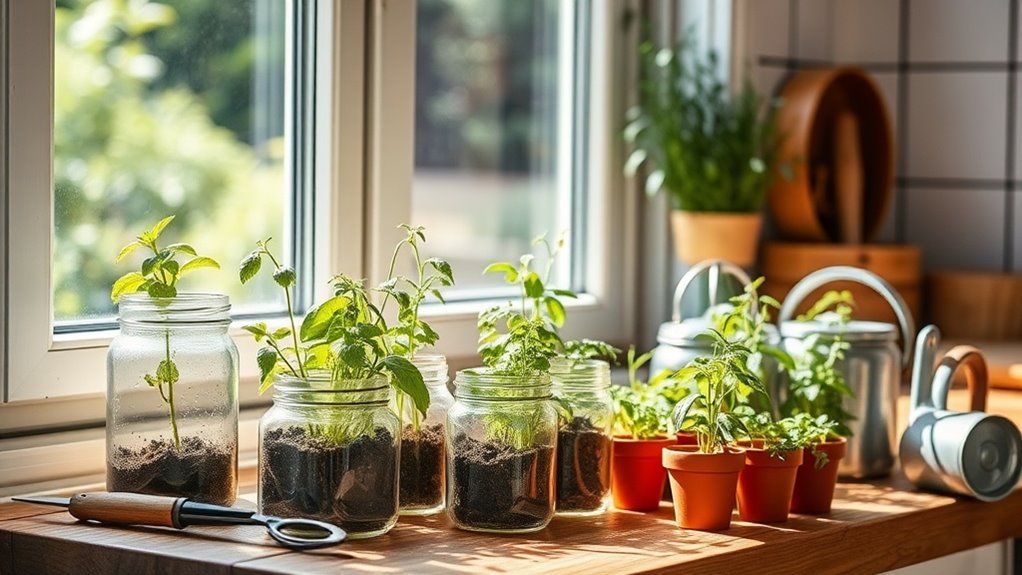How to Start an Indoor Herb Garden Without a Kit
Did you know that many culinary herbs can thrive indoors with minimal effort? By starting an indoor herb garden without a kit, you can enjoy fresh flavors year-round. Selecting the right herbs, containers, and soil is crucial to success, and understanding light requirements enhances growth. As you plan your garden, consider how these elements work together to create a productive environment. Let’s explore how to set this up effectively.
Choosing the Right Herbs for Your Space
When selecting herbs for your indoor garden, consider which varieties will thrive best in your specific environment.
Basil, thyme, and mint are excellent choices for an easy indoor herb garden, as they adapt well to typical indoor light and temperature conditions.
Ensure you’re aware of each herb’s specific light and water needs to maintain optimal growth and health throughout your gardening experience. Additionally, growing conditions such as humidity and airflow can impact the success of your indoor herbs.
Selecting the Ideal Containers
Choosing the right herbs is just the beginning; finding the ideal containers plays a significant role in successful indoor gardening.
Opt for pots with drainage holes to prevent root rot, and select materials like terracotta or ceramic which allow for moisture regulation.
Ensure your containers are the right size; they should provide enough room for roots to grow, promoting healthy herb development. Additionally, proper container selection helps create an optimal environment for your herbs to thrive.
Understanding Light Requirements
How much light do your herbs really need to thrive indoors? Most herbs flourish with 6-8 hours of bright sunlight daily.
Here’s what to consider for optimal growth:
- Position near south or west-facing windows
- Rotate plants weekly for even growth
- Use grow lights if natural light is limited
- Monitor light intensity with a light meter
- Observe your herbs for signs of inadequate light
Preparing the Perfect Soil Mix
To grow healthy herbs indoors, you need to start with the right soil mix, as it plays a crucial role in their overall growth and vitality.
Combine equal parts potting soil, perlite, and compost to enhance drainage and aeration, promoting root development.
This blend provides essential nutrients while ensuring moisture retention, creating an optimal environment for your indoor herb garden’s productivity and health.
Maintaining Your Indoor Herb Garden
While nurturing your indoor herb garden, it’s essential to establish a consistent maintenance routine that promotes healthy growth and prevents common issues.
Pay attention to the following:
- Water regularly, allowing the soil to dry slightly between watering.
- Provide adequate light, ideally 12-16 hours daily.
- Monitor temperature and humidity levels.
- Trim and harvest herbs frequently.
- Check for pests and diseases promptly to avoid infestations. Additionally, ensure you choose plants suitable for windowsill gardening to maximize their growth potential.

